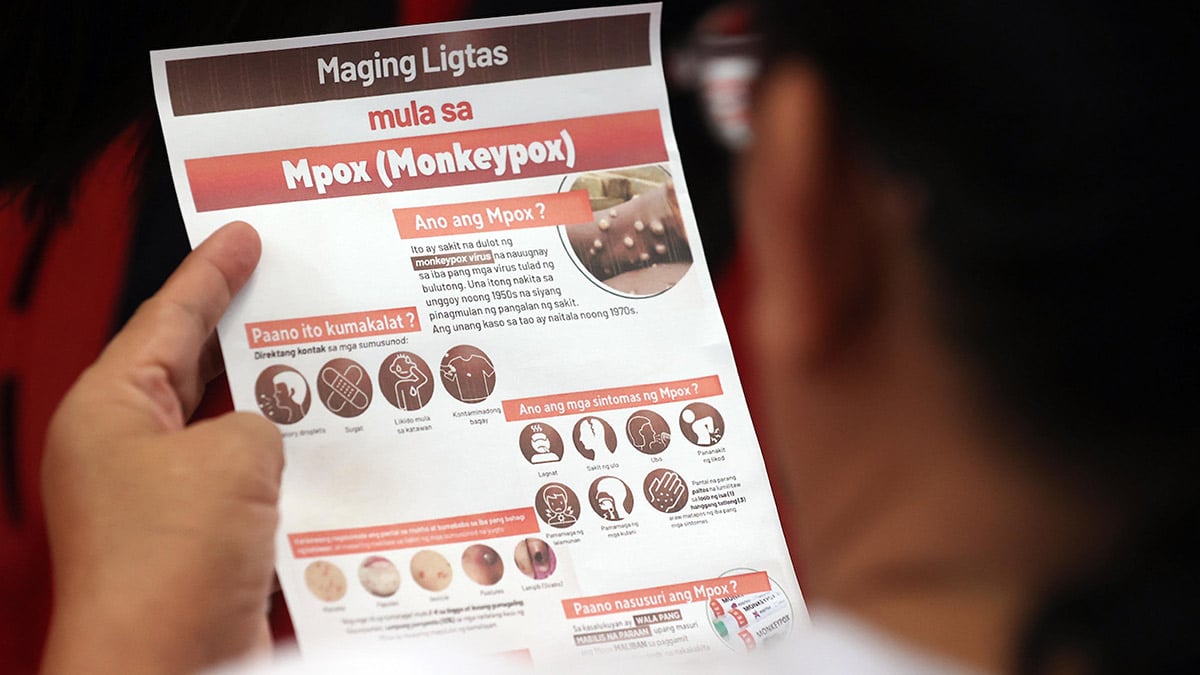Mpox still a global concern, says WHO

INFORMATION DRIVE A San Juan City resident looks over an mpox information sheet issued by the City Hall in September. —Niño Jesus Orbeta
MANILA, Philippines — The World Health Organization (WHO) has decided to keep its alert for mpox at the highest level, as the number of cases and countries continued to rise.
“The WHO director-general, agreeing with the advice of the International Health Regulations (IHR) Emergency Committee, has determined that the upsurge of mpox continues to constitute a public health emergency of international concern,” the WHO said in a statement.
“The decision was based on the rising number and continuing geographic spread of cases, operational challenges in the field, and the need to mount and sustain a cohesive response across countries and partners,” it added.
READ: Lanao del Sur health execs sound alarm vs Mpox
The decision was made after the second meeting of the IHR Emergency Committee on the mpox upsurge on Nov. 22.
In August, WHO declared mpox a global public health emergency for the second time in two years, following an outbreak of the viral infection in Africa that could spread outside the continent.
The WHO is expected to issue next week “temporary recommendations” to the 196 IHR state parties, including the Philippines. IHR defines the countries’ rights and obligations in handling public health events and emergencies that have the potential to cross borders.
Mpox cases in the Philippines also continue to slowly rise, although the Department of Health (DOH) has opted not to regularly release its data to avoid causing undue fear and panic among the public.
Based on available data from the Department of Health (DOH), the country has had at least 32 cases of confirmed mpox cases since 2022. The majority of the cases, at 23, were only recorded since August this year.
The recent cases were detected in the National Capital Region, Calabarzon, and Cagayan Valley.
Health authorities on Friday were also monitoring a suspected mpox case confined in the Amai Pakpak Medical Center in Marawi City.
According to the health ministry of Bangsamoro, the female patient from Malabang, Lanao del Sur, showed symptoms of mpox, including recurring fever, skin rashes, and blisters in her body.
They were awaiting test results from the Research Institute for Tropical Medicine in Muntinlupa City to confirm whether the patient indeed contracted mpox. If it turns out positive, it will be the first mpox case in the region and in Mindanao.
On Friday, the DOH regional office in Calabarzon said it detected four new mpox cases, bringing the total number of cases in the region to 13.
The new patients are aged between 24 and 66 years old and began experiencing symptoms in the first week of November.
The four patients all tested positive for the Clade II variant, which is a milder form of the virus.
The DOH then retracted its statement, saying the data was released “ahead of thorough verification.”
There are no mpox vaccines yet available in the Philippines, as most of the available supply is being directed to African countries, which are currently seeing an upsurge of mpox cases.
On Nov. 19, the WHO approved a second mpox vaccine for emergency use listing (EUL).
The LC16m8 vaccine was developed and manufactured by KM Biologics in Japan. It followed Jynneos of Bavarian Nordic based in Denmark, which was prequalified in September.
Vaccines approved for EUL pave the way for groups such as Gavi, the Vaccine Alliance, and the UN Children’s Fund to buy doses for lower-income countries, including the Philippines.
“Vaccines are one of the important tools to help contain the outbreak as part of a comprehensive response strategy that also includes improved testing and diagnosis, treatment and care, infection prevention control, and engagement and education within affected communities,” said Dr. Yukiko Nakatani, WHO assistant director general for access to medicines and health products.